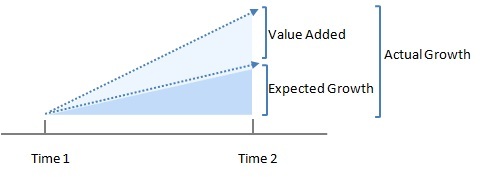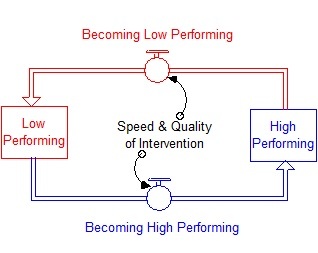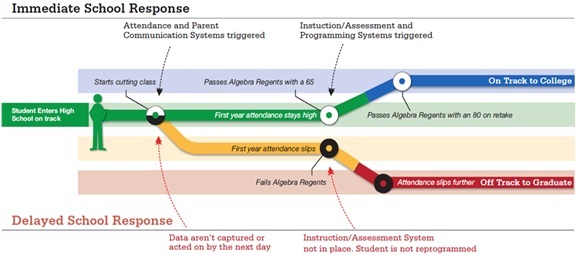Engineering Value-Add: A Design-Driven Approach To School Performance
I recently worked with school leaders enrolled in the Dallas Independent School District’s “Leadership Development – Fellows Academy”. Gloria Williams, Quentyn Seamster, Garet Feimster, Christofor Stephens, Nicole Brooks, Stephanie Burns and many of their colleagues, talking passionately and urgently about their work moving students to higher levels of performance, breathed life into a concept that I had never fully internalized until my trip to Dallas: value-add.
Value-add is a necessary idea in the field of education – and yet the sterile, specialist language in which it is conveyed to those on the front lines (and then the way it is implemented via accountability structures) sometimes discourages educators from being genuinely curious and interested in this foundational concept. And while the specialist lingo certainly alienates a significant group of practitioners, it’s not just the language that separates us from one another – it’s also the lens through which we understand and approach value-add.
There are at least two ways that we can examine this topic: the first and predominant form is often favored by policy makers, academics and accountability experts. This is a data-driven approach to value-add. Within this framework, value-add models attempt to isolate the student’s background, prior achievement, family environment, community environment, socio-economic status, and other non-school related influences from the school’s specific contributions to student performance. Value-add is a type of growth model where we track student achievement at different times during the year to determine if the student is making progress against grade-level content and performance standards. That is, we expect a student to grow by some expected amount. The school effect (after adjusting for other, non-school variables) is the degree to which the student either misses or exceeds the growth expectation.
The data-driven dimension of value-add measures student outcomes and the extent to which a school has helped students achieve or exceed their expected growth potential. This approach tells us whether a school has moved kids – but not necessarily how.
A second and related approach to value-add is the design-driven approach. Here we take as our point of departure the structures within a school that shape a student’s trajectory. Every school has a percentage of lower and higher performing students. In the simple systems thinking map below, one key desired outcome is to move students from lower performing categories into higher performing categories – while maintaining and pushing the higher performing students. Educators influence the “flow” of students in their school via the speed and the quality of their interventions. The highest performing schools understand where to find and maximize opportunities to intervene. They know how to work their “faucets”.
Quentyn Seamster asked: “How do we manipulate these faucets?” Mark Dunetz, VP of our Partnership Support Organization, and his team of systems engineers are working with our schools to design processes and tools for fourteen core systems (e.g. attendance, budget, HR, post secondary, assessment and instruction …) that will help schools determine where and when they need to focus resources to exploit opportunities. They are offering a new and fresh perspective into this concept of design. For example, Danielle Scaramellino, a systems engineer, recently mapped out a very cool google-based system for tracking the college application process. What makes this tool so powerful is that it makes explicit the process – and as the process changes, google (a highly malleable suite of tools) bends to those changes.
As Brad Gunton has noted in a recent post, schools that consistently seize every available opportunity to influence their students’ trajectory (the blue area of the visual below) are, in fact, helping students reach and then exceed their “expected growth targets.” These are the schools that have implemented a significant number of the core systems mentioned above (the design side) and consistently review their progress to goals (the data side).
A school that misses opportunities also shapes a student’s trajectory - and downward trajectories can often be read as an accumulation of error.
When we approach the topic of value-add not just from a data-driven perspective, but also from a design-driven perspective we restore some sort of balance that is sometimes missing from our conversations. We have greater capacity to appreciate both the top-down and bottom-up dimensions of this work. One approach is not better than the other. Both are necessary.
Ultimately, value-add is about the people on the front lines supporting students. Creating and sustaining high performing schools is mind-blowingly hard work and success requires lots of scrappy, gritty resolve. The school leaders in Dallas’ Leadership Development - Fellows Academy are up for the challenge.
Next up: school grit. Stay tuned.
Susan Fairchild is the Director of Research at New Visions for Public Schools.
Note: The beautiful student trajectory visual was created in partnership with our colleague Sarah Slobin!


